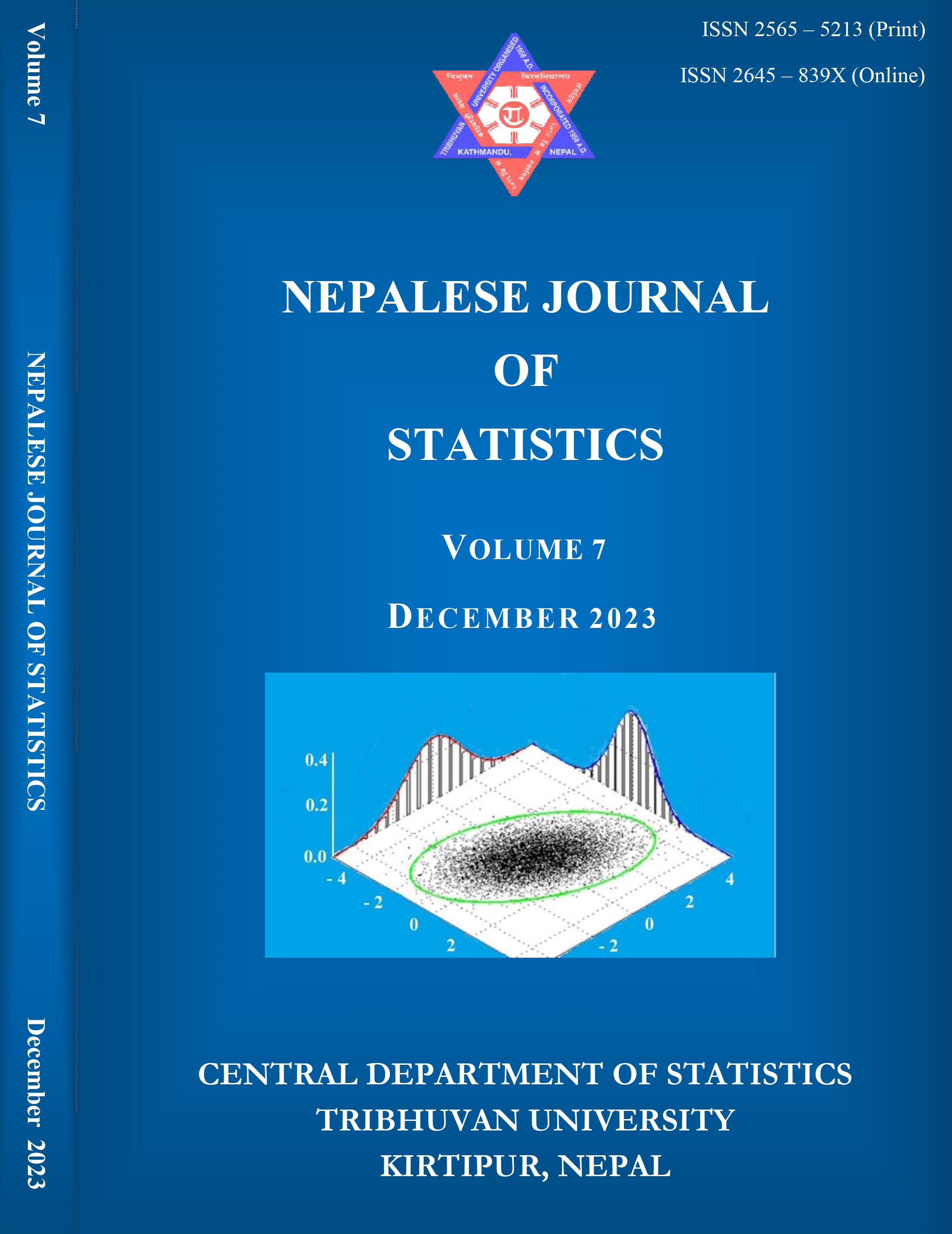Modeling and Forecasting of Spinach Production in Bangladesh
DOI:
https://doi.org/10.3126/njs.v7i1.61053Keywords:
ARIMA, predicting, price, rainfall, R-studio, spinach, stepwise regressionAbstract
Correction: On 03/01/2024 the PDF was replaced because of an error discovered in Table 9. In Table 9, ARIMA (1, 1, 0) replaces ARIMA (0, 1, 2).
Background: In Bangladesh, spinach (Spinachia oleracea L.) is most frequently known as "Palong shak" or Bengal Spinach. Spinach is one of the most prominent vegetable crops grown around the earth. It is a quick-growing annual plant that only lives for one year. Although spinach can be cultivated at any time throughout the year, Bangladesh's production of spinach on a per-unit basis is very low in comparison to that of other advanced nations.
Objective: This study explores the impacts of area, price, and weather parameter adaptability on the local production of spinach in Bangladesh employing annual data from time series covering 60 years.
Materials and Methods: This investigation seeks to comprehend the linear relationship between spinach production, commercial price, geographic location, and meteorological characteristics in Bangladesh by applying stepwise regression analysis to find the most suitable model of Spinach production. In order to evaluate how well the multiple linear regression model fits the data, several diagnostic charts were constructed using the R programming language. To forecast the Spinach production, an autoregressive integrated moving average (ARIMA) model was applied.
Results: According to the findings of the study, there was a positive correlation between spinach output and total harvest area under spinach cultivation. There is weak positive correlation between production and annual mean temperature and a weak negative correlation exists between production and annual mean rainfall. Also, production is perfectly positively correlated with price. Regression analysis revealed that the variables sales price and annual mean rainfall are the best predictors of spinach output. Every unit increase in the price of spinach is increases an additional 5.98 times the average of spinach being produced. An increase of 1 millimeter in annual mean rainfall (AMR) decreases 0.001 times spinach production while other predictors remain fixed. Also, ARIMA (1, 1, 0) with drift model forecasts for next fifteen years that the Spinach production is expected to increase considerably by 75000 tons.
Conclusion: Finally, the study found that farmers' perspective on spinach cultivation could potentially experience a positive upward shift which is expected to last for the next fifteen years.
Downloads
Downloads
Published
How to Cite
Issue
Section
License
© Central Department of Statistics, Tribhuvan University, Kirtipur, Kathmandu, Nepal
The author of article must sign the copyright permission or the author must assign copyright to the Central Department of Statistics, Tribhuvan University prior to publication.
All rights reserved.




